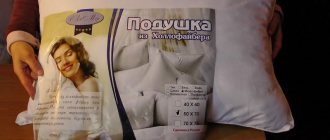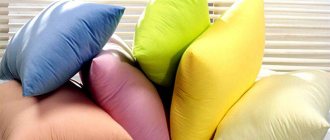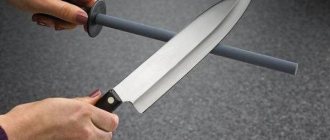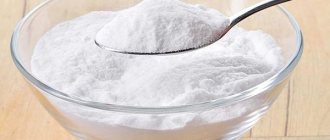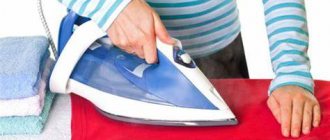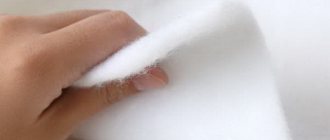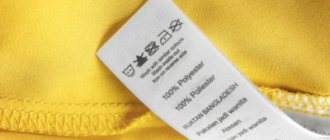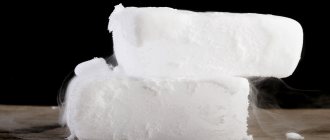Holofiber – one of many modern universal materials. Developed by Russian scientists, a type of synthetic non-woven elements with a trademark. The fabric consists of spiral types of fiber. Forms a large number of pores. They are air cavities. They are a product of petroleum refining. The material is not very expensive.
Placed inside the canvas randomly and vertically. Products with pores distributed uniformly over the entire surface. With a density of 60 g/m2 and up to 4000. Made from chemical compounds of polyester, with thermal fixing.
During production, raw materials for manufacturing are passed through wind tunnels. The result is a canvas, without layers. The manufacturing process takes place at high temperatures. In its presence, the fibers are soldered together. The connection is reliable, durable and elastic. With its characteristic properties.
The components are connected in structure, have no weak points, and are difficult to break. The material is environmentally friendly and contains a minimum amount of harmful compounds. Does not emit toxicity and does not cause irritation to human skin. A stable element, does not decompose in the environment, does not rot.
It is warm, with low thermal conductivity, and retains heat well. It has elasticity and can be given any configuration. It never bunches up in different places and does not form pellets. Absorbs noise waves. Withstands a large number of washes and the use of hot water. Doesn't increase the heat in a fire, just melts. Dries quickly after contact with water. You can easily remove dirt stains from it. Tolerates thermal effects. This is 100% high grade synthetic! Buyers admire holofiber!
There are many varieties for use. Modern fillings for objects and various insulation materials are made from it. Holofiber is an alternative to down, padding polyester, and wool . Used in construction as thermal insulation or sound insulation. In the aviation industry, in space development. Used for making filters. Serves as a filler. Actively used:
in sewing clothing for children and adults;
- for shoes;
- filling furniture structures;
- bedding accessories;
- soft toys;
as insulation for apiaries.
The scope of its use is quite wide, it becomes an indispensable material. The heat, when using holofiber, remains inside the product. This occurs due to the structure of the fibers. The spiral spring of the material forms an "air chamber". This helps retain heat.
Advantages. The advantages cannot be listed. It is characterized by the following properties:
- the filler does not absorb odors;
- does not ignite;
- does not crumble;
- does not deform from washing;
- Microorganisms and moths do not settle in it.
Holofiber, if desired, takes on any shape. After compression of the material, its shape is restored.
Polyester
Manufacturing process:
- Selection of raw materials for production (oil, gas and their products).
- Production of liquid polyester.
- Mechanical and chemical processing of polyester.
- Creation of fibers (liquid mass passes through a system of narrow holes).
- Finishing work, improvement, setting the necessary characteristics.
- Making fabric from fibers.
Depending on the percentage of chemical components, the product has different technical characteristics . To the touch, polyester can be similar to cotton, wool or silk. Fabric made from 100% material is called decorative silk.
If the composition contains 65% cotton, the fabric receives protection from direct sunlight , it wrinkles easily and lasts longer. In the presence of viscose (30%), the product does not change shape for years, the color remains saturated. When polyester is combined with polyamide, it becomes more elastic and resistant to high and low temperatures. The interaction of spandex and synthetic raw materials provides a stable structure and high-quality breathability. Clothing with added yarn does not stretch well, does not wrinkle and lasts longer.
Advantages of the material:
- Protection from external factors (low temperature, rain, snow, ultraviolet rays).
- Resistance to physical stress (stretching, friction).
- Easy care (washing and drying without additional functions, poor creasing).
- Good drape.
- Easy processing, sewing and cutting.
- Light weight.
- Poor color fading and fading.
- Low cost.
- Water-repellent property.
- Poor elasticity.
- Protection from insects and odors.
Advantages
The filler is warm, soft, and holds its shape well. It is breathable, easy to wash and dries quickly. It is easier to care for than things with down filling. The temperature for using insulation has a wide range. The holofiber density of 300 g/m2 is enough to not freeze in 20-degree frost.
Among other advantages of the material:
- has low weight;
- costs less than natural insulation materials;
- durable;
- not electrified;
- does not cause allergic reactions;
- not interested in pests;
- does not absorb odors.
Sintepon
The material serves as a warm filler for clothing and other textile items. It is a synthetic product based on polyester fibers. Rarely, but to give additional properties, wool or cotton is added to the composition. The canvas consists of several parallel layers.
The thickness can be varied, depending on the purpose of use, and the density ranges from 40 g/m3 to 1.5 kg/m3 .
When wool is added, wool is obtained. If the structure of fiber formation is changed, synthetic fluff or holofiber is made. These materials are an improved version of padding polyester.
Main properties:
- Light weight (all things turn out light and airy).
- Water-repellent effect.
- High thermal insulation (often used for sewing down jackets and winter suits).
- Resistance to physical impact, retention of shape.
- Safe composition, no allergens.
- Low melting point.
The best manufacturing method is thermal. The production process boils down to the fact that individual fibers are glued together into a single fabric. At high temperatures, this procedure is faster and better. In addition to the thermal method, there is adhesive and needle-punched.
What to choose in the end
Which insulation is better to choose for a winter jacket is a controversial question. If thermal insulation properties come first, then a down jacket with natural filling or shelter is better. When you need a more affordable option, holofiber is suitable.
For women's down jackets, maintaining their shape is important. It will be provided by high-quality natural or synthetic down, isosoft, holofiber, and thinsulate. The latter is also the thinnest, which is important for creating a slender silhouette.
For children's jackets, lightness, hygroscopicity, wear resistance and low cost are more important, since clothes have to be changed often as they grow. It is optimal to choose holofiber or a more expensive option - Thinsulate or Isosoft.
Same characteristics
Polyester and synthetic winterizer are synthetic materials . The basis for them is polyester fibers. Since the composition of the materials is approximately the same, they have several similar characteristics:
- High hygroscopicity.
- Thermal conductivity.
- Long service life (if the composition meets quality standards).
- Protection against the development of bacteria and microbes (due to artificial components).
- Hypoallergenic.
The products are easy to care for and can withstand long-term wear without changing shape or color.
In the manufacture of down jackets and winter sets, both of these materials can be used: polyester as a fabric, synthetic padding as a filler and a warm lining.
To impart additional uncharacteristic properties, natural materials (cotton, wool, silk) can be added to the fabric and filling. These products have become the most popular among synthetics due to their many quality properties.
Compound
Let's figure out what insulation is made of. Holofiber is an artificial material. The filler contains synthetic fibers, mainly polyester. The material is also made from recycled plastic and lavsan.
The production of holofiber is interesting. The harvested raw materials are combed out and hot-molded. The result is hollow fibers with springy properties.
The operating temperature range of the insulation depends on the density. Not least important is the covering material: raincoat fabric, eco-leather, denim, polyester. But when buying outerwear, they focus on average indicators.
| Density | Temperature |
| 100 – 150 g/m2 | +5ᵒC – -10ᵒC |
| 200 – 250 g/m2 | – 10ᵒC – -20ᵒC |
| 300 – 350 g/m2 | – 20ᵒC – -30ᵒC |
Distinctive features
- Classification of material . Polyester is a woven material from which clothing and other products are made. Sintepon is a filler necessary for stuffing various objects and things. The products have different structures, and this is their main difference. Sometimes, padding polyester is made in flat sheets, but this form is not a fabric.
- Manufacturing technology . The woven product is produced by weaving synthetic fibers. The individual elements form a single canvas. The filler is also made from synthetic raw materials, but for this purpose, the fibers are connected to each other with an adhesive base.
- Scope of application . Polyester can be combined with padding polyester. Their combined use is only in winter clothing. The fabric can be used to produce summer textiles, curtains, tulle, tablecloths and other lightweight items. The filler is used to create mattresses, children's toys, and briefcases (to reduce the load on the back and shoulders).
- Color palette . Since padding polyester is not visible when wearing or using things made from it, it does not need aesthetic qualities. The filler is made in white - the most neutral color. According to its characteristics, the fabric should have a variety of colors so that there is a choice for an individual case. Unlike natural products, synthetics have a wider palette of shades. You can get rich, bright colors.
Thinsulate
Thinsulate insulation was originally developed for NASA spacesuits. But a few years later, the general public learned about it, and the material began to be used in sportswear. For the first time, for “civilian” purposes, it was used in equipment for skiers and clothing for researchers of the Far North. Only in the 2000s did he gain real popularity. Now Thinsulate is everywhere: in coats, blankets, shoes and even toys.
Advantages of Thinsulate
This is a synthetic non-woven material. It is made from hundreds of thousands of ultra-fine fibers combined into one fabric. That is why it will keep its shape even after being in a vacuum bag.
- Thermal insulation. Due to its structure, the material acts as an excellent insulator. You won't be cold as it will retain your body heat and provide extra warmth. But therein lies the danger: you can overheat in warm weather. Therefore, there is no need to wrap yourself in Thinsulate if it’s +20 outside!
- Ease. The insulation fibers are thinner than human hair. Therefore, even despite the density, the material remains quite light and thin.
- Elasticity. The fiber can take on any shape, which is convenient for athletes, as it provides complete freedom of movement.
- Safety. The material is not flammable; even when in contact with an open fire, it does not burn out, but only melts. Thinsulate is also completely hypoallergenic.
- Versatility. It can be used in any area of human life.
- Moisture resistance. Thinsulate does not accumulate moisture and does not absorb water.
- Wear resistance. The filler does not lose its original properties even after several years of active use.
- Ease of care. The main thing is not to wash it in boiling water.
We have NASA astronauts to thank for all this. Just think how often they could change things on the orbital station? That’s why the insulation has collected all the coolest things that could be gotten from it. If Thinsulate could withstand temperatures of -273°C, then Russians -40°C simply do not care for it.
Disadvantages of Thinsulate
Despite all the coolness of the material, it also has its drawbacks. But they cannot be compared with the advantages and now you will understand why.
- High cost of material. You have to pay for quality.
- May cause overheating. This is only possible if you wear things with Thinsulate in warm weather (when the temperature is above +15°C).
- Accumulates static electricity. Long-haired girls will need to check their hairstyle more carefully.
- Difficult to paint. But since it is located inside the fabric, this does not play a special role.
Thinsulate care
- The material does not require special care. You only need to follow a few basic rules:
- Washing should be done in warm or cold water;
- After washing, Thinsulate must be rinsed several times;
- Laundry liquids should be used instead of powders;
- You need to let things dry naturally.
Insulation for winter clothes
Holofiber SOFT. Lightweight, elastic and heat-resistant material. Even in frosty weather and temperatures of -25 °C it will retain heat and protect against hypothermia.
Thinsulate. Its structure resembles natural fluff. New technologies allow it not to lose its shape, repel moisture and participate in heat exchange. Provides excellent warmth at -30°C.
Belarusian Fibertek. Hypoallergenic, lightweight and durable. Temperature fluctuations up to -40 °C. An ideal solution for long walks in the fresh air.
American brand PrimaLoft. The basis for the creation was the imitation of the characteristics of down, but with an improved structure and use of fiber. This type is designed specifically for outdoor activities and winter sports, provided that the temperature does not reach -20 °C.
Belgian Isosoft. The presence of a double spunbond fabric gives additional density and lightness to the filler. The possibilities are limited by temperatures of -20 °C.
Disadvantages of down filling
To fully determine what is warmer – down or holofiber, you also need to learn about the disadvantages of products made from natural materials. Every person should remember that when choosing outerwear for the cold season, one must take into account whose feather was used.
The best option is a goose. Unscrupulous manufacturers may produce jackets made from chicken feathers, which are incredibly brittle and do not provide the necessary volume to retain heat.
The main disadvantages of down and feathers can be identified:
- difficulties during washing (it is best to take such clothes to dry cleaning);
- the likelihood of an allergic reaction;
- fluff is a favorable environment for the reproduction of a large number of mites.
Care
The material is not prone to deformation, so it can be machine washed. Optimal temperature: 30 – 40°C. The choice of washing is delicate, manual or for synthetics. The exact rules of care are determined by the information on the product label. It is recommended to wash jackets and other outerwear with insulation with rubber balls to prevent the filling from pilling.
The detergent is chosen in liquid form - it is washed out better and does not leave streaks. The number of revolutions during spinning is set to the minimum. Dried naturally.
If you need to wash a blanket, it is done by hand in the bathtub. The detergent is whipped into foam. For rinsing, use a shower head with strong pressure. Allow to drain and dry horizontally, preferably on a wire rack. When the filler rolls off, you have to rip out the cover and comb out the holofiber with a brush. It is then placed back into the sheath and stitched up.
Dear readers of the Tkan.Club website, if you still have questions on this topic, we will be happy to answer them. Leave your reviews, comments, share stories if you have dealt with this material! Your life experience may be useful to other readers.
The second insulation is holofiber
Non-woven polyester fabric was developed by Russian specialists. The material, which is hollow inside, holds heat well and does not wrinkle. Between the two outer layers, the fibers are arranged perpendicular to the surface or twisted into balls.
A distinctive feature of insulation is its ability to create optimal conditions for humans. Excess moisture comes out through the loose surface. The heat is retained. The body does not freeze and does not sweat.
Holofiber insulation is approved for sewing children's clothes. It is used to make clothing for winter sports. It is completely safe even for people prone to allergies. The characteristics are similar to natural bird down. It tolerates machine washing well in a gentle cycle. Things made of 100% polyester last a long time and retain their appearance.
It turns out that holofiber and comforter are about the same thing. Polyester fiber, after special processing, is crumpled into small balls approximately 5 mm in diameter. This type of filler is called holofiber in English and lomforel in French. The quality of this material is superior to synthetic winterizer, but still inferior to Thinsulate.


